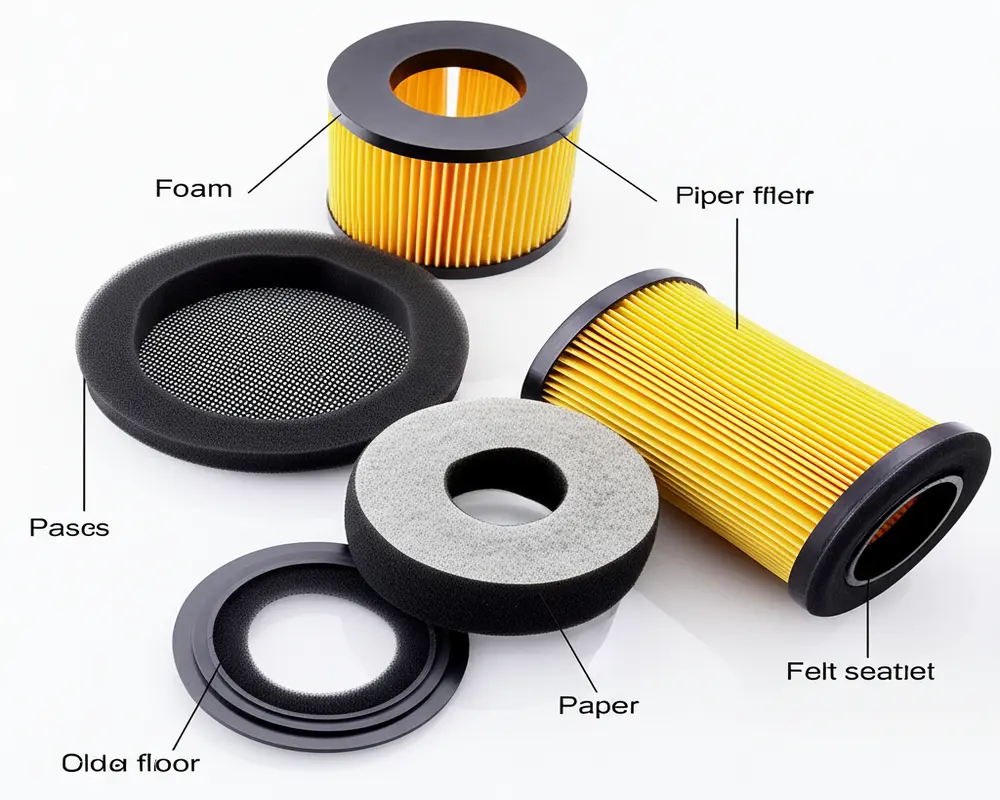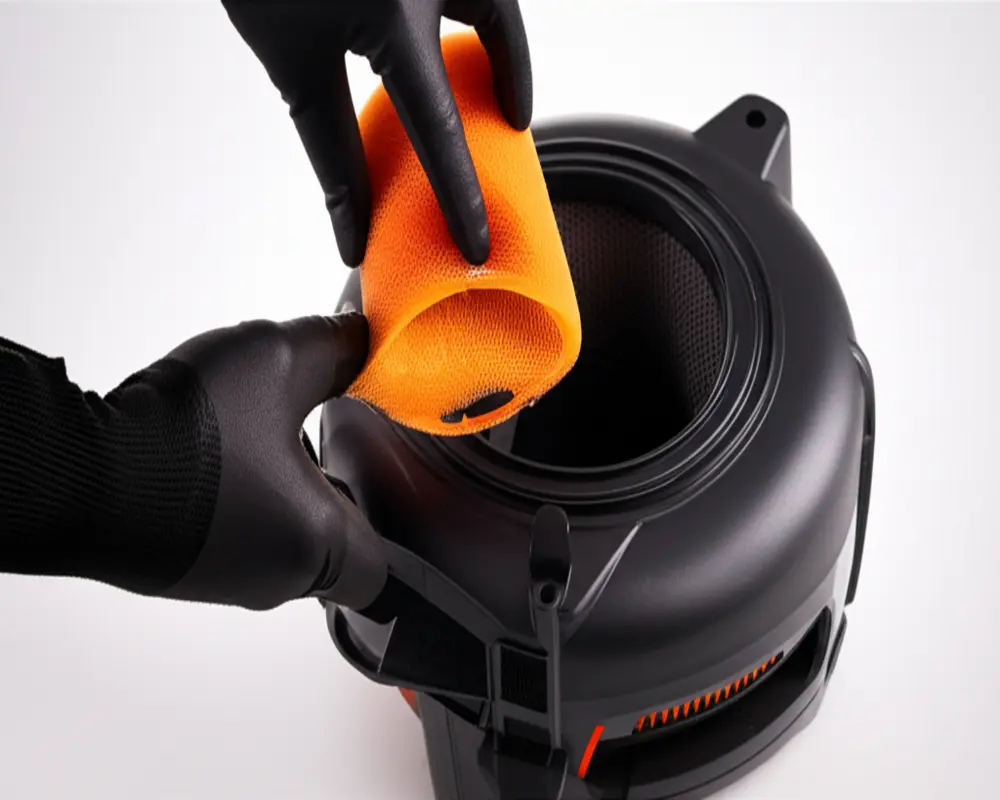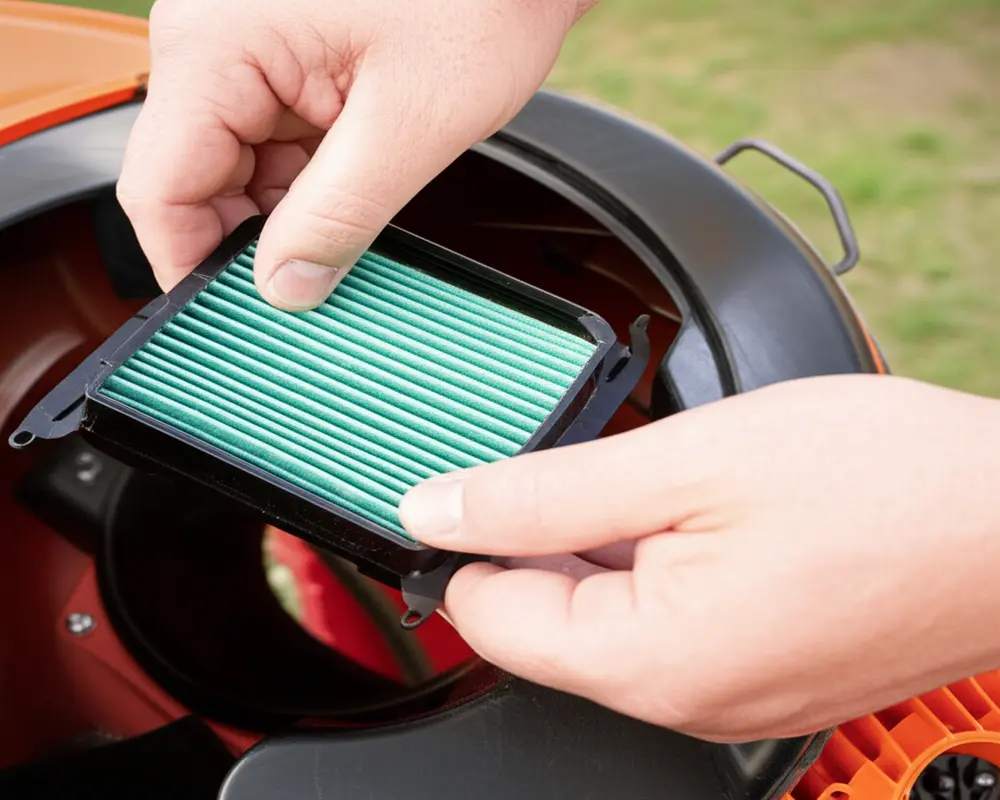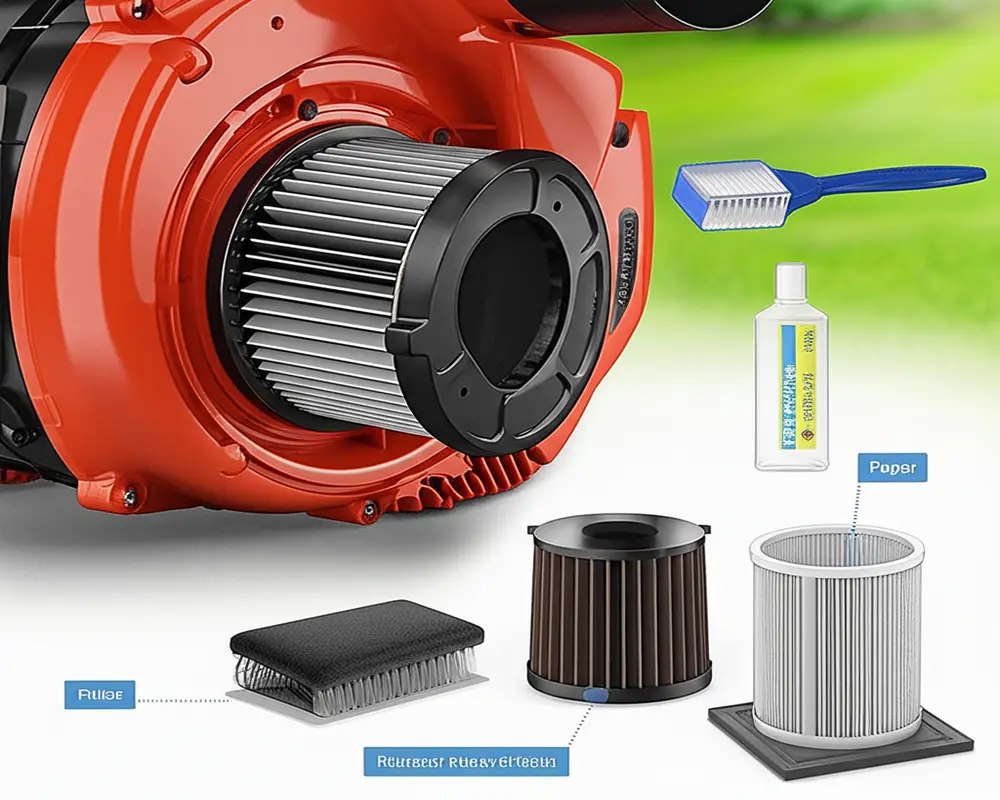Leaf Blower Air Filter: Ultimate Guide to Maintenance & Replacement
Your leaf blower air filter plays an indispensable role in maintaining your leaf blower’s engine health, performance, and longevity. It serves as the first line of defense against dirt and debris that can cause costly damage. Neglecting this component often leads to diminished power, increased fuel consumption, and frustrating starting issues. In this comprehensive guide, you will learn everything needed to maintain, clean, troubleshoot, and replace your leaf blower air filter properly, ensuring your equipment runs smoothly season after season.
Thank you for reading this post, don't forget to subscribe!Understanding Your Leaf Blower Air Filter
What Does a Leaf Blower Air Filter Do?
The primary function of the air filter in a leaf blower is to prevent dirt, dust, and other particles from entering the engine’s combustion chamber. By filtering incoming air, it protects the internal engine parts from abrasive contaminants that accelerate wear and tear. A clean air filter allows optimal airflow, which is essential for efficient combustion, better fuel economy, and sustained engine power. Conversely, a clogged or damaged filter restricts airflow, leading to incomplete combustion, harder starts, and increased engine strain.
Types of Leaf Blower Air Filters
Leaf blower air filters come in several varieties, each with distinct characteristics and maintenance needs:
- Foam Filters: Made from porous foam material, these filters are popular for their ability to trap fine dust while allowing air to pass freely. They are washable and reusable with proper cleaning and oiling.
- Paper (Pleated) Filters: Constructed from pleated paper, these filters offer excellent filtration by trapping particles in the folds. They are generally disposable and require replacement rather than cleaning.
- Felt Filters: Felt filters provide a balance between filtration efficiency and airflow. Commonly used in certain models, they need gentle cleaning and careful handling to avoid damage.
Below is an illustration showcasing common types of leaf blower air filters:

When to Inspect, Clean, or Replace Your Air Filter
Regular inspection of your leaf blower air filter is crucial. The general recommendation is to check the filter every 10 to 25 hours of operation or at least once per season. Visual signs that indicate the need for cleaning or replacement include visible dirt buildup, tears, or a compressed filter material. Performance symptoms such as reduced power, uneven engine speed, or difficulty starting also signal air filter issues. Adhering to a maintenance schedule prevents premature engine wear and costly repairs.
Troubleshooting Leaf Blower Problems Linked to the Air Filter
Several common problems experienced during leaf blower operation can be traced back to a clogged or faulty air filter:
- Hard Starting or Failure to Start: A dirty air filter chokes the engine’s air supply, making ignition difficult.
- Engine Sputtering or Stalling: Insufficient airflow causes irregular combustion, resulting in sputtering or sudden engine stops.
- Loss of Power or Airflow: Restricted air reduces engine efficiency, causing sluggish performance.
- Excessive Exhaust Smoke and Increased Fuel Consumption: Poor combustion from restricted air supply leads to inefficient fuel burn and smoky exhaust.
To confirm if the air filter is the culprit, begin with a visual inspection, followed by running the engine with the filter removed briefly (in a safe and controlled environment) to check if performance improves. If so, the filter likely needs cleaning or replacing.
How to Clean Your Leaf Blower Air Filter Step-by-Step
Safety first: Before starting any maintenance, disconnect the spark plug wire to prevent accidental engine startup. Wear gloves and eye protection to safeguard against debris and cleaning agents.
Tools and Supplies Needed: A screwdriver (to access the filter compartment), a soft brush, mild detergent or soap, clean rags, compressed air source (optional), and engine oil (for foam filters).
Cleaning Foam Filters
Foam filters are washable and can be cleaned effectively by following these steps:
- Remove the air filter cover using a screwdriver and gently extract the foam filter.
- Submerge the filter in warm water mixed with mild soap and gently squeeze to release dirt. Avoid wringing which can tear the foam.
- Rinse thoroughly with clean water until all soap is removed.
- Allow the filter to dry completely in a well-ventilated area, away from direct sunlight or heat sources.
- Once dry, lightly coat the foam with clean engine oil to enhance particle trapping. Squeeze out excess oil to avoid clogging airflow.
- Reinstall the filter carefully, ensuring it seats properly in the housing.

Cleaning Paper and Felt Filters
Paper and felt filters require a gentler approach as they are more delicate:
- Remove the filter housing cover and take out the filter carefully.
- Use a soft brush or compressed air to dislodge loose debris. Avoid using water as it can damage paper filters and reduce their effectiveness.
- Inspect the filter for holes, tears, or excessive dirt buildup. If damaged or heavily soiled, replacement is recommended.
- Reinstall the filter securely after cleaning.
If you want to learn more about other maintenance tips for small engines, you can also visit our guide on why lawn mowers won’t start.
Replacing Your Leaf Blower Air Filter
While cleaning can extend the life of many filters, there are situations where replacement becomes necessary:
- Visible damage such as tears or holes in the filter material.
- Persistent performance issues despite cleaning.
- Filters that have reached the end of their recommended service life (usually annually or after extended hours of use).
Tools Needed: Screwdriver for removing the air filter cover, replacement filter compatible with your model.
Replacement Instructions:
- Turn off the leaf blower and disconnect the spark plug wire for safety.
- Unscrew and remove the air filter cover.
- Take out the old filter carefully.
- Install the new filter, ensuring it fits snugly and seats correctly without gaps.
- Replace the cover and fasten it securely.
- Reconnect the spark plug wire and start the engine to check for smooth operation.

Finding the Right Leaf Blower Air Filter for Your Model
Choosing the correct air filter is critical to prevent engine damage and ensure optimal performance. Filters vary by size, shape, and material, depending on the blower model.
Identify Your Leaf Blower Model Number: Typically found on the blower’s housing or in the user manual. This number is essential for sourcing compatible filters.
Using Model Number to Find Correct Filters: Refer to your owner’s manual or use online parts lookup tools provided by manufacturers like Stihl or Echo. These resources help verify OEM (original equipment manufacturer) part numbers and compatible aftermarket options.
OEM vs Aftermarket Filters: OEM filters guarantee compatibility and quality but can be pricier. Aftermarket filters vary widely; some offer excellent value and performance, while others may compromise engine health due to inferior materials. Always check specifications and reviews before purchasing.
Key Specifications to Check: Dimensions (length, width, thickness), filter material, sealing design, and compatibility with your blower’s air intake system.
Where to Buy Replacement Leaf Blower Air Filters
Reliable sources for purchasing replacement filters include:
- Online Specialty Retailers: Websites dedicated to outdoor power equipment parts offer a wide selection and expert advice.
- Manufacturer Websites and Authorized Dealers: Buying directly from brands like Stihl and Echo ensures genuine parts.
- General E-commerce Platforms: Amazon and eBay provide convenience but require careful selection and review checking to avoid counterfeit products.
- Local Hardware Stores and Small Engine Shops: Support local businesses and get personalized assistance.
Smart shopping tips include comparing prices, verifying return policies, and reading customer feedback to ensure product quality.
Frequently Asked Questions (FAQs)
- How often should I change the leaf blower air filter?
- Typically, every 10 to 25 hours of use or at least annually. More frequent checks are advised in dusty conditions.
- Can I use generic filters instead of OEM?
- Generic filters may be used if they match OEM specifications, but quality varies. OEM filters are safest for engine health.
- What happens if I run the leaf blower without an air filter?
- Running without a filter allows dirt and debris to enter the engine, causing severe damage and reducing lifespan.
- Should foam filters be oiled, and with what?
- Yes, foam filters should be lightly oiled with clean engine oil to improve particle trapping. Avoid over-oiling which can restrict airflow.
- What if issues persist after changing the air filter?
- Persistent problems may indicate carburetor or spark plug issues. Consult a professional or refer to troubleshooting guides.
- Are all leaf blower filters the same?
- No, filters differ by model, type, and material. Always use filters designed for your specific leaf blower model.
Conclusion: Keep Your Leaf Blower Air Filter Clean for Optimal Performance
Maintaining a clean and well-functioning leaf blower air filter is vital for efficient engine operation, fuel economy, and prolonged equipment life. Incorporating regular air filter inspections, cleaning, and timely replacement into your maintenance routine prevents many common performance issues. With this knowledge, you are empowered to troubleshoot, clean, and select the right filter confidently, ensuring your leaf blower delivers reliable power whenever needed.
For further tips on maintaining your garden tools, consider exploring our detailed articles on pruning shears handle comfort and wooden handle hand cultivators.

